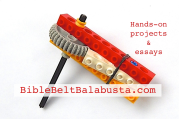
Tu B’Shevat parsley for Pesach karpas
Tu B’Shevat is the New Year and/or Birthday of the Trees, but the classic Tu B’Shevat planting activity doesn’t really have much to do with trees. We plant parsley. All over America, little Jewish kids plant parsley seeds on Tu B’Shevat. Sounds like Sunday School in Chelm, right? But it does make sense. To germinate parsley seeds and use the plant two holidays later as the karpas on a Passover seder plate connects our earliest Spring holiday to our main Spring holiday, and it lets kids get their fingers dirty fostering green life from dormant seeds. Tu B’Shevat is the official start of the agricultural year, when tree sap (and all lifeforce by extension) begins to rise after winter rest.
Parsley, though, is not a tree. It’s easier, folks say, easier than planting a tree with a classroom of children. Maybe, but parsley isn’t foolproof (or Chelm-proof). The seeds are slow to germinate, and a two month headstart before Passover isn’t enough time to grow an amount of curly parsley anyone would describe as generous. Still, it’s worth it. Anytime kids can grow or make stuff for the holidays—real stuff that gets used—it’s worth it. And this activity has the bonus of linking nature and gardening to Jewishness, which is an invaluable connection to grow.
HOW TO PLANT PARSLEY (KARPAS) WITH KIDS:
Note that parsley seeds are teeny and can be difficult for a very young child to handle. Having an adult sprinkle the nearly invisible seeds from a paper packet into a child’s pot is not much fun, and no one ends up learning anything. Better to let the child touch the magical seeds and put them onto the magical dirt. See below.
I’ve honed a planting method that works well with any age, from toddlers on up, and with one child or dozens…
The child will:
- decorate a small pot (oil pastels are lovely on terra cotta) (or, just use a plastic or paper drinking cup with a hole punched in the bottom)
- fill pot with good potting soil up to about an inch from the top
- wet the soil with a watering can (and a pan underneath to catch the overflow)
- stick moist thumb into a shallow, flat dish of the seeds (like a pie pan, but the pan color should contrast with the seeds so the seeds are visible)
- scrape whatever seeds are stuck to the thumb onto the dirt
- add a bit of soil to cover seeds
- moisten top of soil with sprayer or mister
- set in a sunny spot and keep moist
The leader will:
- Show a bunch of mature parsley. Pass it around to let kids smell, touch and taste. (“This is what you’ve planted today…”)
- Show a real seder plate with a depiction of Karpas on it (“This is where your parsley will go in just a few weeks….”)
Having these two props are crucial for young kids to really grasp what they are doing and why. Real, concrete, Show and Tell props are super conversation starters and can generate lots of questions. Don’t know the answers? Find them out together.
GARDENING TIPS:
Start an extra pot or two to keep. Transplant it into the garden or a bigger pot when it outgrows the original container. Parsley is a biennial. By next year, it’ll be plenty big enough to use for a seder, even if you’ve been harvesting it (snipping stems for kitchen use) all along. And as a biennial, it will flower the second year, giving you blooms for gorgeous Swallowtail butterflies. Parsley, along with other members of the carrot family like Queen Anne’s lace, is the preferred host plant of Swallowtail larvae. Plus, the spent flowers will set seed and provide many more planting projects for the future.
Vocabulary:
Chelm: in Jewish folktales, a village of fools.
Tu B’Shevat literally means the fifteenth day of Shevat (a month in the Jewish calendar). See this page at MyJewishLearning.com for an overview of the holiday.




















Just a few weeks? Do you want me to have a heart attack RIGHT NOW?
If you panic, I’ll panic. Let’s wait till the day after Purim for the palpitations.
Pingback: Eat a fruit, plant its seeds for Tu B’Shevat | Bible Belt Balabusta
Pingback: Candy Tu B’Shevat | Bible Belt Balabusta
Pingback: Green Thumb Training for Tu B'Shevat
Pingback: Tu B’Shevat stuff: indoor gardening, edible bowls, sugar overload and birdfeeders | Bible Belt Balabusta
Pingback: Tu B’Shevat garden-in-an-eggshell | Bible Belt Balabusta
Pingback: Teaching the Seder Plate: Real Symbolic Foods | Bible Belt Balabusta